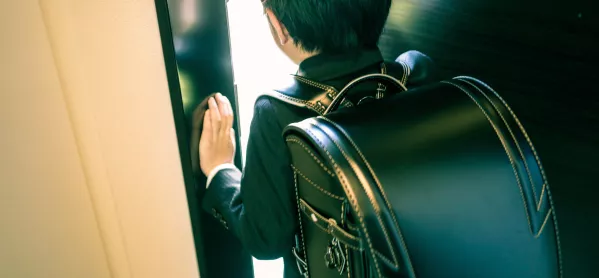Secondary school transition tips for autistic pupils

Moving from primary to secondary school is a major transition in any child’s educational career. The change presents challenges at some level for most children, but we have to think particularly carefully about how to make the transition more successful for autistic pupils.
Moving to secondary school involves adapting to a bigger, busier environment. Pupils need to learn new school routes, and most will probably start to travel to and from school independently.
They need to learn to navigate their way to different rooms for various lessons and think about different methods of learning. They will take on a bigger workload, and there is an assumption that they are ready to take on new levels of responsibility.
There is also the task of making new friends and maybe breaking up with old ones. And when we factor in that secondary school-place allocations are announced in April, presuming a child has been given a place at their chosen school (appeals can sometimes be heard as late as July), this leaves schools at both ends with one academic term to think about how to ensure a smooth transition.
Why is it harder for autistic children?
Starting secondary school can be a particularly challenging time for autistic pupils because of the many changes involved, some of which are unpredictable. Many autistic children will be anxious about entering the vast unknown of secondary school.
They may also be worried about the social dynamics in their new school and what this will mean for them. Children who have a diagnosis of autism may also have other differences in their language, attention or motor skills, which may also make their transition more difficult than that of their neurotypical peers.
How can we best prepare?
Each autistic child is different and there is no one-size-fits-all approach to transition. Primary school professionals will have a wealth of knowledge about individual children and many pupils will leave primary school with self-help strategies. These skills should be noted and built upon.
We need to listen carefully and learn from the reflections of autistic people about their school experiences. One thing we need to think about doing better is empowering autistic children to be at the heart of decision-making. Children have to be central to planning meetings held between professionals at their current and future schools.
To plan effective provision, it’s important to hear directly from them about their priorities rather than make assumptions. Planning meetings can make all the difference when it comes to a better start to secondary school.
They should be attended by a member of secondary staff who can ensure key information is shared, who has the authority to oversee that the necessary support is in place and regularly reviewed. Schools and families should think together about using an appropriate template to summarise key information about a child.
In primary school, it’s important to offer children and families as much clarity as possible about their secondary school futures. Time must be set aside in the school diary well in advance for school visits and other preparation work (such as looking at the school website and practising journeys).
Together, schools and parents can consider establishing friendship groups for children who may have shared interests before they start Year 7.
Local authorities may offer transition workshops as part of their local offer. As part of their transition, our autistic pupils have benefitted from drama sessions at a children’s theatre and sessions with an organisation that focuses on supporting communication needs.
It’s all too easy to focus on what can go wrong during the transition to secondary school. It’s really important for secondary colleagues to know about the interests of autistic children who join their schools, and to think about how they can nurture these interests.
Developing positive relationships with all pupils is key to improved wellbeing and academic success, and this is no different for autistic pupils. In fact, it is probably even more important.
You need a Tes subscription to read this article
Subscribe now to read this article and get other subscriber-only content:
- Unlimited access to all Tes magazine content
- Exclusive subscriber-only stories
- Award-winning email newsletters
Already a subscriber? Log in
You need a subscription to read this article
Subscribe now to read this article and get other subscriber-only content, including:
- Unlimited access to all Tes magazine content
- Exclusive subscriber-only stories
- Award-winning email newsletters